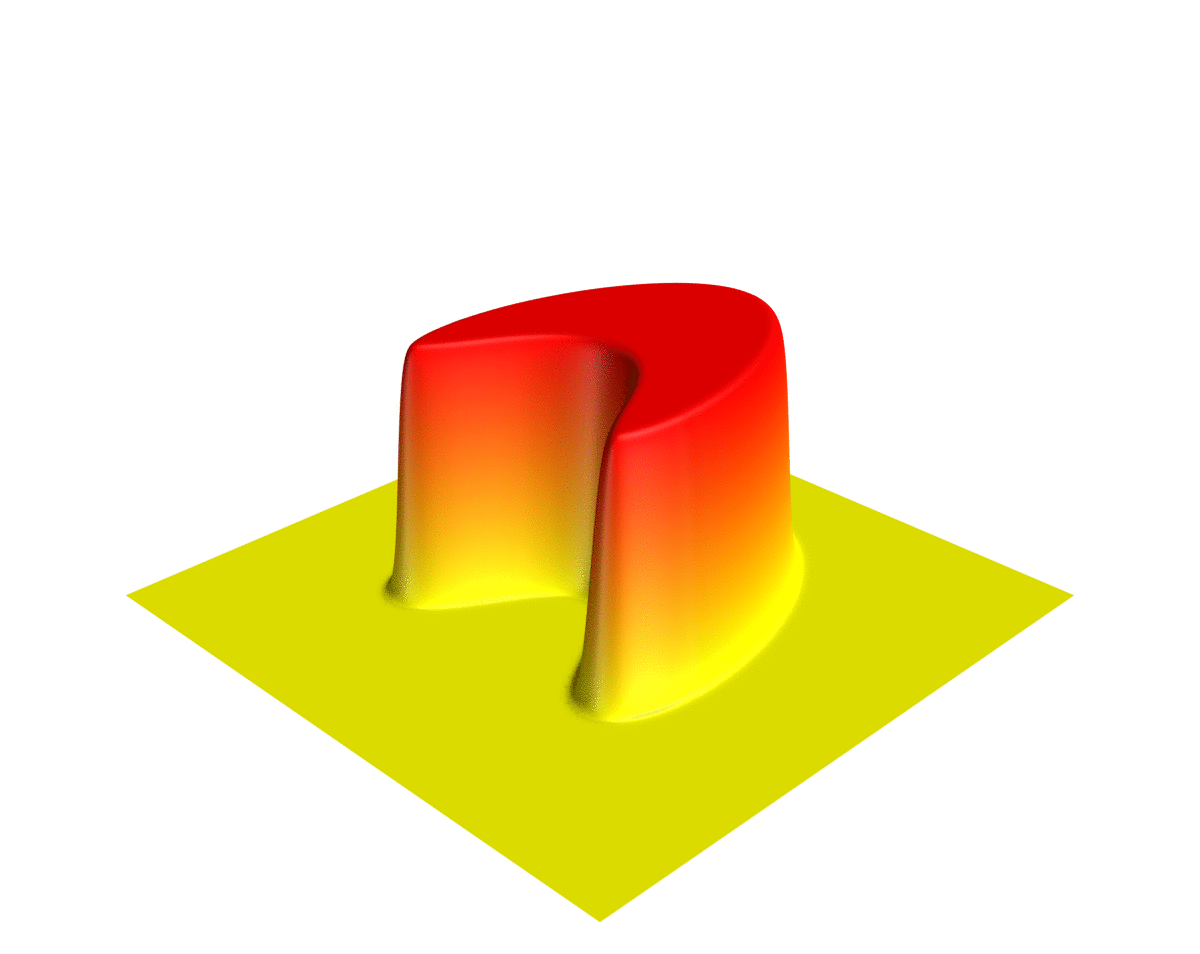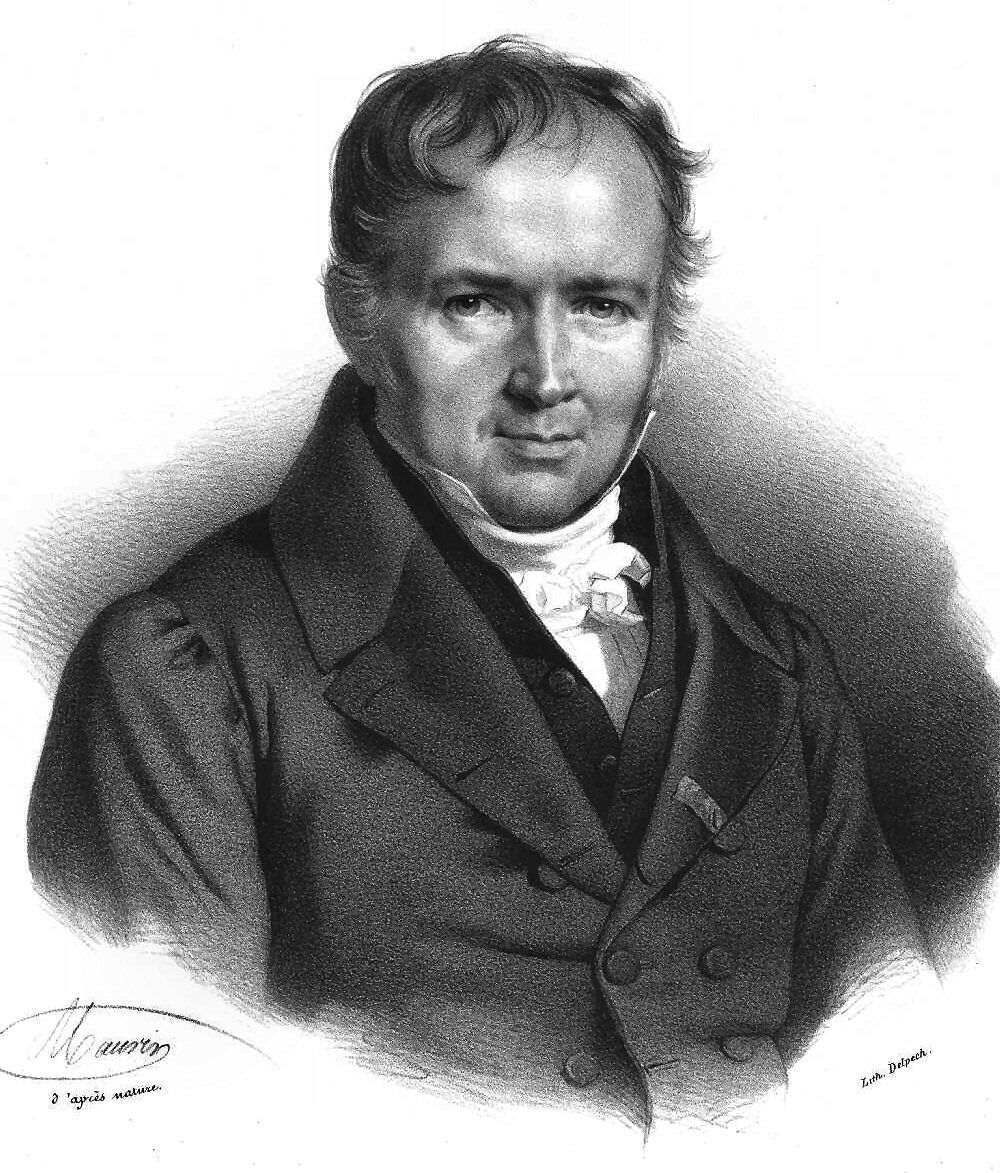|
Gibbons–Tsarev Equation
The Gibbons–Tsarev equation is an integrable second order nonlinear partial differential equation. In its simplest form, in two dimensions, it may be written as follows: : u_t u_-u_x u_+u_+1=0 \qquad (1) The equation arises in the theory of dispersionless integrable systems, as the condition that solutions of the Benney moment equations may be parametrised by only finitely many of their dependent variables, in this case 2 of them. It was first introduced by John Gibbons and Serguei Tsarev in 1996, This system was also derived, as a condition that two quadratic Hamiltonians should have vanishing Poisson bracket. Relationship to families of slit maps The theory of this equation was subsequently developed by Gibbons and Tsarev.J. Gibbons and S.P. Tsarev, Conformal Maps and the reduction of Benney equations, Phys Letters A, vol 258, No4-6, pp 263–271, 1999. In N independent variables, one looks for solutions of the Benney hierarchy in which only N of the moments A^n are indepen ... [...More Info...] [...Related Items...] OR: [Wikipedia] [Google] [Baidu] |
Integrable System
In mathematics, integrability is a property of certain dynamical systems. While there are several distinct formal definitions, informally speaking, an integrable system is a dynamical system with sufficiently many conserved quantities, or first integrals, that its motion is confined to a submanifold of much smaller dimensionality than that of its phase space. Three features are often referred to as characterizing integrable systems: * the existence of a ''maximal'' set of conserved quantities (the usual defining property of complete integrability) * the existence of algebraic invariants, having a basis in algebraic geometry (a property known sometimes as algebraic integrability) * the explicit determination of solutions in an explicit functional form (not an intrinsic property, but something often referred to as solvability) Integrable systems may be seen as very different in qualitative character from more ''generic'' dynamical systems, which are more typically chaotic syste ... [...More Info...] [...Related Items...] OR: [Wikipedia] [Google] [Baidu] |
Partial Differential Equation
In mathematics, a partial differential equation (PDE) is an equation which involves a multivariable function and one or more of its partial derivatives. The function is often thought of as an "unknown" that solves the equation, similar to how is thought of as an unknown number solving, e.g., an algebraic equation like . However, it is usually impossible to write down explicit formulae for solutions of partial differential equations. There is correspondingly a vast amount of modern mathematical and scientific research on methods to numerically approximate solutions of certain partial differential equations using computers. Partial differential equations also occupy a large sector of pure mathematical research, in which the usual questions are, broadly speaking, on the identification of general qualitative features of solutions of various partial differential equations, such as existence, uniqueness, regularity and stability. Among the many open questions are the existence ... [...More Info...] [...Related Items...] OR: [Wikipedia] [Google] [Baidu] |
Dispersionless Equations
Dispersionless (or quasi-classical) limits of integrable partial differential equations (PDE) arise in various problems of mathematics and physics and have been intensively studied in recent literature (see e.g. references below). They typically arise when considering slowly modulated long waves of an integrable dispersive PDE system. Examples Dispersionless KP equation The dispersionless Kadomtsev–Petviashvili equation (dKPE), also known (up to an inessential linear change of variables) as the Khokhlov–Zabolotskaya equation, has the form : (u_t+uu_)_x+u_=0,\qquad (1) It arises from the commutation : _1, L_20.\qquad (2) of the following pair of 1-parameter families of vector fields : L_1=\partial_y+\lambda\partial_x-u_x\partial_,\qquad (3a) : L_2=\partial_t+(\lambda^2+u)\partial_x+(-\lambda u_x+u_y)\partial_,\qquad (3b) where \lambda is a spectral parameter. The dKPE is the x-dispersionless limit of the celebrated Kadomtsev–Petviashvili equation, arising when considering ... [...More Info...] [...Related Items...] OR: [Wikipedia] [Google] [Baidu] |
Poisson Bracket
In mathematics and classical mechanics, the Poisson bracket is an important binary operation in Hamiltonian mechanics, playing a central role in Hamilton's equations of motion, which govern the time evolution of a Hamiltonian dynamical system. The Poisson bracket also distinguishes a certain class of coordinate transformations, called '' canonical transformations'', which map canonical coordinate systems into other canonical coordinate systems. A "canonical coordinate system" consists of canonical position and momentum variables (below symbolized by q_i and p_i, respectively) that satisfy canonical Poisson bracket relations. The set of possible canonical transformations is always very rich. For instance, it is often possible to choose the Hamiltonian itself \mathcal H =\mathcal H(q, p, t) as one of the new canonical momentum coordinates. In a more general sense, the Poisson bracket is used to define a Poisson algebra, of which the algebra of functions on a Poisson manifold is a ... [...More Info...] [...Related Items...] OR: [Wikipedia] [Google] [Baidu] |
Riemann Invariant
Riemann invariants are mathematical transformations made on a system of conservation equations to make them more easily solvable. Riemann invariants are constant along the characteristic curves of the partial differential equations where they obtain the name invariant. They were first obtained by Bernhard Riemann in his work on plane waves in gas dynamics. Mathematical theory Consider the set of conservation equations: : l_i\left(A_ \frac +a_\frac \right)+l_j b_j=0 where A_ and a_ are the elements of the matrices \mathbf and \mathbf where l_ and b_ are elements of vectors. It will be asked if it is possible to rewrite this equation to : m_j\left(\beta\frac +\alpha\frac \right)+l_j b_j=0 To do this curves will be introduced in the (x,t) plane defined by the vector field (\alpha,\beta). The term in the brackets will be rewritten in terms of a total derivative where x,t are parametrized as x=X(\eta),t=T(\eta) : \frac=T'\frac+X'\frac comparing the last two equations w ... [...More Info...] [...Related Items...] OR: [Wikipedia] [Google] [Baidu] |
Conformal Map
In mathematics, a conformal map is a function (mathematics), function that locally preserves angles, but not necessarily lengths. More formally, let U and V be open subsets of \mathbb^n. A function f:U\to V is called conformal (or angle-preserving) at a point u_0\in U if it preserves angles between directed curves through u_0, as well as preserving orientation. Conformal maps preserve both angles and the shapes of infinitesimally small figures, but not necessarily their size or curvature. The conformal property may be described in terms of the Jacobian matrix and determinant, Jacobian derivative matrix of a coordinate transformation. The transformation is conformal whenever the Jacobian at each point is a positive scalar times a rotation matrix (Orthogonal matrix, orthogonal with determinant one). Some authors define conformality to include orientation-reversing mappings whose Jacobians can be written as any scalar times any orthogonal matrix. For mappings in two dimensions, ... [...More Info...] [...Related Items...] OR: [Wikipedia] [Google] [Baidu] |
Loewner Differential Equation
In mathematics, the Loewner differential equation, or Loewner equation, is an ordinary differential equation discovered by Charles Loewner in 1923 in complex analysis and geometric function theory. Originally introduced for studying slit mappings (conformal mappings of the open disk onto the complex plane with a curve joining 0 to ∞ removed), Loewner's method was later developed in 1943 by the Russian mathematician Pavel Parfenevich Kufarev (1909–1968). Any family of domains in the complex plane that expands continuously in the sense of Carathéodory to the whole plane leads to a one parameter family of conformal mappings, called a Loewner chain, as well as a two parameter family of holomorphic univalent self-mappings of the unit disk, called a Loewner semigroup. This semigroup corresponds to a time dependent holomorphic vector field on the disk given by a one parameter family of holomorphic functions on the disk with positive real part. The Loewner semigroup generalizes the no ... [...More Info...] [...Related Items...] OR: [Wikipedia] [Google] [Baidu] |
Polynomial
In mathematics, a polynomial is a Expression (mathematics), mathematical expression consisting of indeterminate (variable), indeterminates (also called variable (mathematics), variables) and coefficients, that involves only the operations of addition, subtraction, multiplication and exponentiation to nonnegative integer powers, and has a finite number of terms. An example of a polynomial of a single indeterminate is . An example with three indeterminates is . Polynomials appear in many areas of mathematics and science. For example, they are used to form polynomial equations, which encode a wide range of problems, from elementary word problem (mathematics education), word problems to complicated scientific problems; they are used to define polynomial functions, which appear in settings ranging from basic chemistry and physics to economics and social science; and they are used in calculus and numerical analysis to approximate other functions. In advanced mathematics, polynomials are ... [...More Info...] [...Related Items...] OR: [Wikipedia] [Google] [Baidu] |

